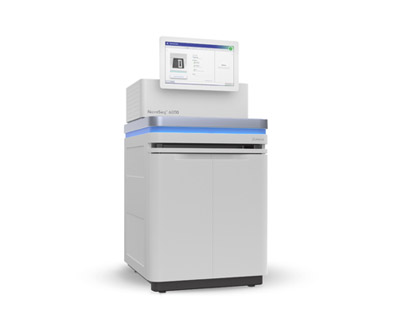
January 9, 2017
At Illumina, we are focused on unlocking the power of the genome to improve human health. In the eight years since we launched the original HiSeq® 2000, we’ve continuously innovated on the architecture, opening up new applications for genomics and driving down the cost of sequencing a human genome by an order of magnitude from $10,000 to $1,000. With NovaSeq, we’re ready to do it again. We sat down with Joel Fellis, Director of Product Marketing to talk about what’s under the hood of Illumina’s newest and highest throughput sequencers.
Why did you develop NovaSeq?
When we launched HiSeq X® in 2014, we were surprised by how much demand there was for large scale human whole genome sequencing at lower price points. Both our customers and the market were telling us that less expensive high throughput sequencing would enable researchers to undertake bigger more ambitious projects to deconvolute biology – from disease research to sequencing populations.
Customers told us that they wanted to perform human whole genome sequencing – taking advantage of the power and pricing of the HiSeq X without the multimillion dollar capital expense. Across different areas of research, our customers want to sequence more samples, to sequence broader (i.e. genomes rather than exomes), to look deeper into a sample by sequencing at much greater depths for “needle in the haystack” applications like deep tumor profiling or liquid biopsy. NovaSeq will do all of these things, opening the doors to deeper, broader, and more highly powered genomic studies. NovaSeq is removing barriers and providing users with the power, per-sample economics, and flexibility to run experiments in ways that they never could before on an Illumina sequencer.
What’s new about NovaSeq?
There are over 70 innovations that power NovaSeq to deliver new throughput and per-sample price points, while delivering data quality that is every bit as good as HiSeq, if not better. Some major innovations include a higher density flow cell format to pack many more genomes into a run. Another was a completely redesigned, custom made optical system to deliver a 4x increase in scan speed. Our core chemistries also went through some changes with reengineered dye sets and a new surface chemistry that increases the signal to noise ratio. These chemistry changes result in faster run times and an improvement to data quality. Finally, with the huge increases in data throughput, we had to re-code our primary analysis software to keep pace with the system.
What’s this about a $100 genome?
The HiSeq architecture, now in its eighth year, moved the industry from the $10,000 genome to the $1,000 genome. We believe that we can do it again with NovaSeq and that future systems derived from the NovaSeq architecture will usher in the $100 genome.
For Research Use Only. Not for use in diagnostic procedures.


